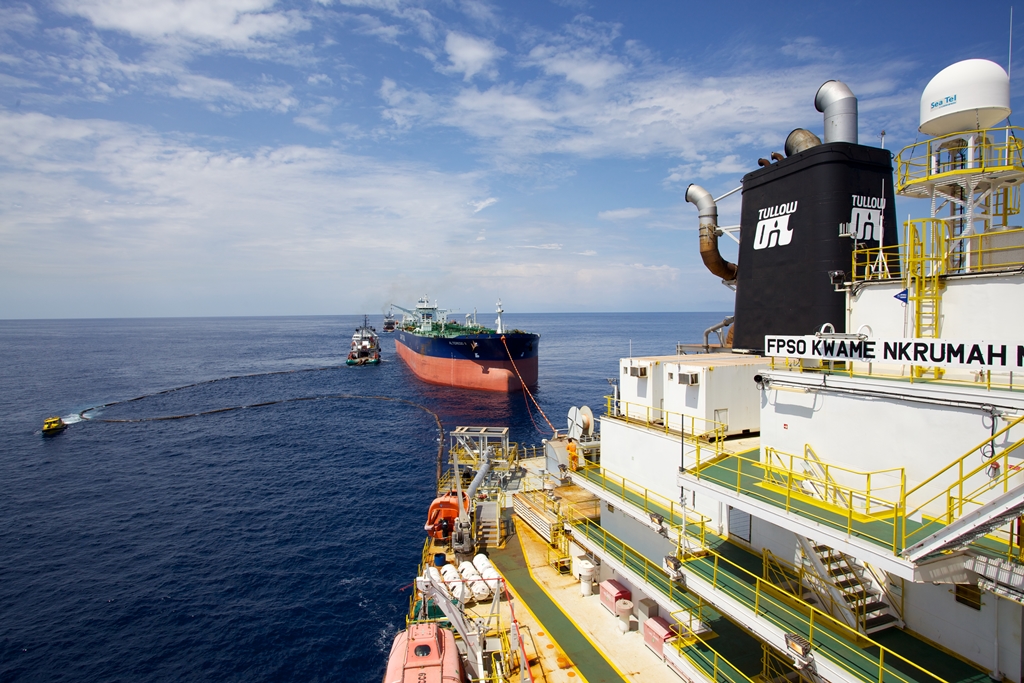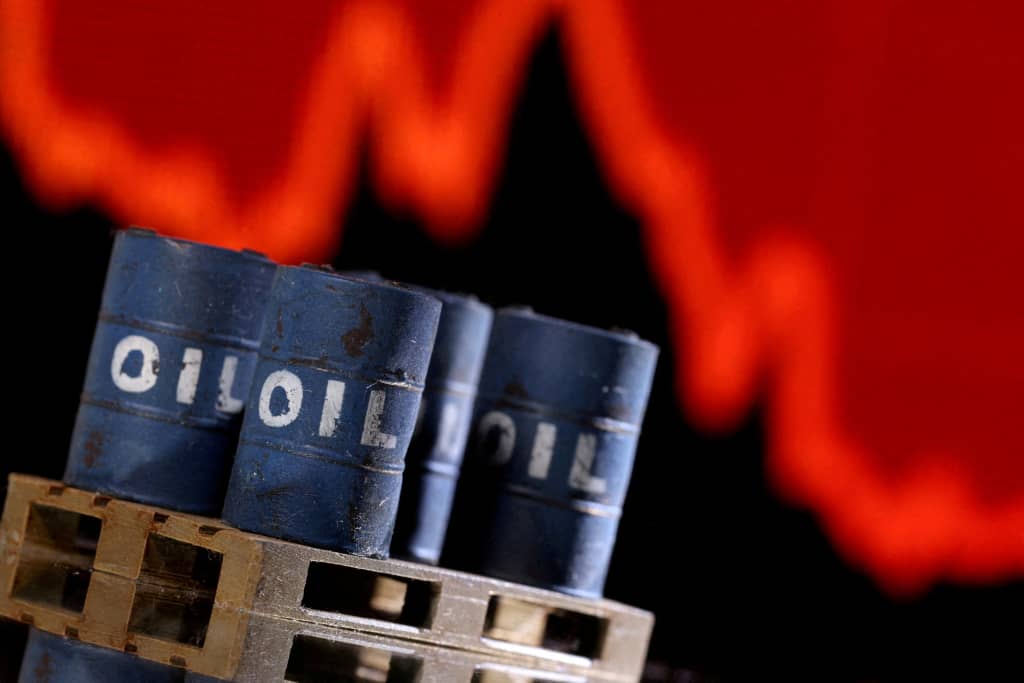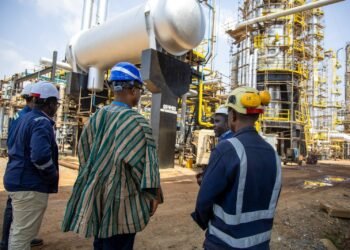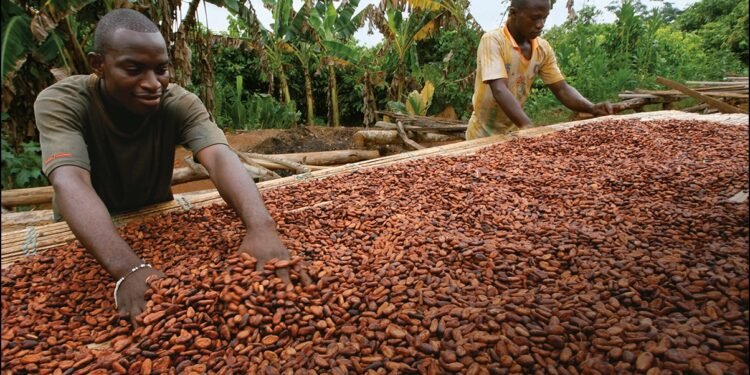Ghana’s crude oil production has taken a sharp downturn, falling by 25.92 percent year-on-year in the first half of 2025, according to the Public Interest and Accountability Committee (PIAC).
The decline, is seen as one of the steepest in recent years, raises fresh concerns about the sustainability of petroleum revenue and the broader implications for the economy.
In its 2025 Semi-Annual Report on the management and use of petroleum revenues, PIAC revealed that “total output from Ghana’s three producing offshore fields, Jubilee, TEN, and Sankofa-Gye Nyame (SGN) dropped to 18.42 million barrels (bbls) in the first half of 2025,” compared to 24.86 million barrels during the same period in 2024.
The Committee attributed the decline mainly to operational shutdowns, natural reservoir decline, and maintenance activities across all three fields.
It warned that unless these structural challenges are addressed, Ghana’s petroleum revenue inflows could face continued volatility.
Jubilee Field Suffers Major Setback

The Jubilee Field, operated by Tullow Oil, remained Ghana’s leading crude producer but also recorded the steepest output decline.
Production fell by 32.8 percent, from 16.41 million barrels in the first half of 2024 to 11.02 million barrels during the same period in 2025.
PIAC’s data showed that average daily production at Jubilee dropped from 90,755 barrels per day (bbl/d) last year to 60,898 bbl/d this year.
The Committee attributed the fall largely to a planned maintenance shutdown between March 26 and 31, followed by extended operational works in early April.
“The decline in output was influenced by planned maintenance activities and reservoir management challenges.”
PIAC’s 2025 Semi-Annual Report
The field’s highest monthly production of 2.40 million barrels was recorded in January, while April registered the lowest output at 1.27 million barrels, following the temporary shutdown.
Industry experts have long cautioned that the Jubilee Field, Ghana’s oldest producing asset, is entering a natural decline phase, making sustained investment in well optimization and new drilling crucial to maintaining output.
TEN Field Output Declines 14%

Production from the Tweneboa-Enyenra-Ntomme (TEN) Field, also operated by Tullow, decreased by “14 percent year-on-year, falling from 3.45 million barrels in the first half of 2024 to 2.97 million barrels in 2025.” Daily production averaged 16,420 bbl/d, down from 19,065 bbl/d last year.
According to PIAC, the shortfall was caused by a mini-shutdown for flare tip replacement and persistent reservoir management challenges.
The report noted that while the maintenance shutdown was brief, reservoir performance has remained an ongoing concern for the TEN partners.
The field’s highest monthly output came in March, with 0.51 million barrels, while the lowest was recorded in May, with 0.45 million barrels.
The Sankofa-Gye Nyame (SGN) Field, operated by Eni Ghana, recorded the smallest decline among the three producing fields. Output fell by 11.6 percent, from 5.00 million barrels in the first half of 2024 to 4.42 million barrels in 2025.
Average daily production declined from 27,600 bbl/d to 24,463 bbl/d. PIAC attributed the drop to intermittent operational disruptions and reservoir management constraints, though it noted that the SGN field had shown greater stability compared to Jubilee and TEN.
The Committee stated, “The SGN field continues to exhibit relative operational resilience,” highlighting its importance to Ghana’s overall production mix.
The field also supplies associated gas for power generation, making it critical to both petroleum revenues and the country’s energy security.
Warning Signs for Revenue and Energy Security

The Committee cautioned that the consistent decline in crude production, if not urgently addressed, could threaten petroleum revenue stability, budgetary planning, and energy sector financing.
Petroleum receipts remain a vital component of Ghana’s fiscal framework, funding key programs under the Annual Budget Funding Amount (ABFA).
“Addressing operational inefficiencies and investing in reservoir maintenance are critical to sustaining Ghana’s oil production levels.
“Persistent declines will have adverse implications for petroleum revenue inflows and energy sector stability.”
PIAC’s 2025 Semi-Annual Report
The fall in production comes at a time when Ghana’s economy faces tight fiscal conditions and high external debt servicing costs.
Any shortfall in oil revenues could widen the fiscal gap, especially as the government pursues ambitious infrastructure and energy investment programs.
PIAC also recommended that the government strengthen oversight of field operations and ensure that production-sharing partners adhere to agreed maintenance and optimization schedules.
As global oil prices remain relatively stable around $65 per barrel, Ghana’s challenge is not pricing but production.
For now, the Committee’s report serves as a clear reminder that without reinvestment, policy clarity, and operational discipline, the country risks losing its momentum in the petroleum sector.























